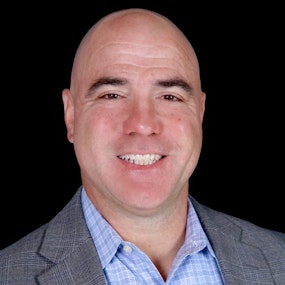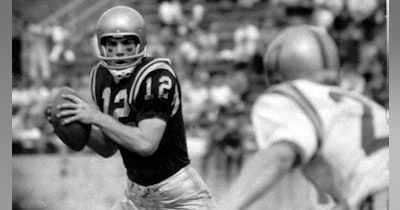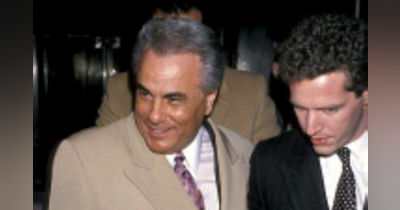And just like that, his words focused my thoughts!
Isn’t amazing how the right words from a wise leader can have a profound impact on one's thinking. In your own life, has there been a moment when someone's words or guidance helped clarify your thoughts or inspired you to pursue a particular path or vision?
Last week, while attending the International Association of Chief’s of Police (IACP) annual conference I met some friends for dinner. The group included what I would consider many of the “who’s who” of leaders that have been instrumental in advancing the concept of Crime Gun Intelligence (CGI) nationally over the past several years, so it would make sense that we would discuss our surprise and admiration for the amount of CGI presentations on this year’s event agenda. Stealing from the Barbara Mandrell song, we quipped that “we were CGI when CGI wasn’t cool.”
An Insightful Leader
And then he spoke.
Frank Fernandez, retired Chief of Police and security and risk assessment professional, current member of the IACP Firearms Committee and past committee chair, described how the litany of efforts and initiatives advanced over the past several years aimed at CGI – many orchestrated by those in the room – were beginning to take root. As each of us began to reminisce as to those initiatives–- rethinking NIBIN from an evidentiary tool to a lead generator, policy driven turnaround times for NIBIN and eTrace, layering law enforcement information with forensic data, information sharing through crime gun intelligence centers – Frank added that each of those important efforts have all served as building blocks that have gotten us to this watershed moment.
Akin to a philosopher he then described the concept of “cathedral thinking” and the importance for leaders and change agents to have a vision and pay it forward for the next generation.
He explained how cathedral thinking, in essence, is the act of planning and executing endeavors that extend far beyond one's own lifetime or career. It is a testament to human ambition, characterized by setting goals of colossal proportions, akin to the construction of grand cathedrals.
The roots of cathedral thinking can be traced back to the magnificent cathedrals of medieval Europe, such as Notre-Dame in Paris which took two centuries to complete. In more modern times, the Washington National Cathedral took over eighty years to complete. All to say that these examples, epitomize the enduring legacy of those who embarked on those monumental undertakings from their inception. Most visionaries did not live to see the fruits of their labor.
At the core of cathedral thinking lies a profound lesson, transcending personal interests in order to extend its benefits to future generations. Its message serves as the cornerstone upon which monumental endeavors are built, solidifying a sense of purpose and direction.
Writing these words, offers me the opportunity to reflect on Pete Gagliardi as someone I know who I can label as a cathedral thinker. Pete convened this impressive group of former crime fighters for an incredible dinner at a Sicilian restaurant in San Diego. Moreover, he is one of the principals working continuously over the past 25+ years, to institutionalize crime gun intelligence both nationally and internationally, as an ATF Agent, a private sector industry executive, and a retired grandpa.
All one has to do is read his book The 13 Critical Tasks: An Inside Out Approach to Solving Gun Crime and they will see the roadmap needed to navigate and create a CGI capability.
Having been intimately involved in many organizational change initiatives – from instituting intelligence-led policing capabilities, establishing a statewide fusion center, and refocusing investigative, forensic, and analytic capabilities to aid in shaping the onset of what would become a model statewide CGI capability – Frank’s description of cathedral thinkingleft an indelible mark on me. He further explained how cathedral thinkers understand the importance of patience. Their projects, whether in business, art, or science, are all built on the understanding that greatness takes time. This long-term perspective separates them from the short-sighted pursuits that often dominate today's landscape.
In the days that followed, while attending conference presentations, walking the exhibitor floor, and attending dinners with friends and colleagues the IACP conference further solidified the importance of the concept of cathedral thinking toward not only advancing a vision but to galvanize communities to collaborate and coordinate around a shared purpose. Much like the artisans and laborers who joined forces to build grand cathedrals, modern cathedral thinkers understand the power of collaboration.
My final night was marked by an annual get together hosted by Ron Brooks of Brooks, Bawden, Moore Government Relations and Strategic Consulting. Ron, a well-known leader in law enforcement circles, is the personification of a cathedral thinker having initiated many visionary changes in the law enforcement community. The attendees of his annual get together – far too many to name here – are all in their own right cathedral thinkers responsible for uniting people under a common cause and paying it forward by channeling the collective energy of their communities to achieve remarkable goals.
Among this august group of attendees, a concept that Frank outlined just days before became that much clearer. In the face of our fast-paced world, where immediate gains often overshadow long-term vision, cathedral thinking challenges us to revisit the significance of legacy, perseverance, and community.
The Three Tenets of Cathedral Thinking
- At the core ofcathedral thinking lies a profound vision, one that transcends personal interests and extends to benefit future generations. This vision serves as the cornerstone upon which monumental endeavors are built, solidifying a sense of purpose and direction.
- Cathedral thinkers understand the importance of patience. This long-term perspective separates them from the short-sighted pursuits that often dominate today's landscape.
- Cathedral thinking encourages setting ambitious and audacious goals. It challenges individuals and organizations to think beyond the present and focus on leaving a lasting legacy.
In a world where immediate results often overshadow the pursuit of enduring greatness, cathedral thinking serves as a compelling reminder of the enduring power of visionary, long-term endeavors. As we navigate the ever-changing landscape of the modern world, cathedral thinking encourages us to set our sights on the distant horizon, uniting communities, and inspiring innovation for generations to come.
The next time you have the opportunity to visit and walk around a cathedral like the one in Washington, DC, think about those stone mason fathers, who began construction there in 1907, and who never got to see what their sons and grandsons finished some 83 years later.






